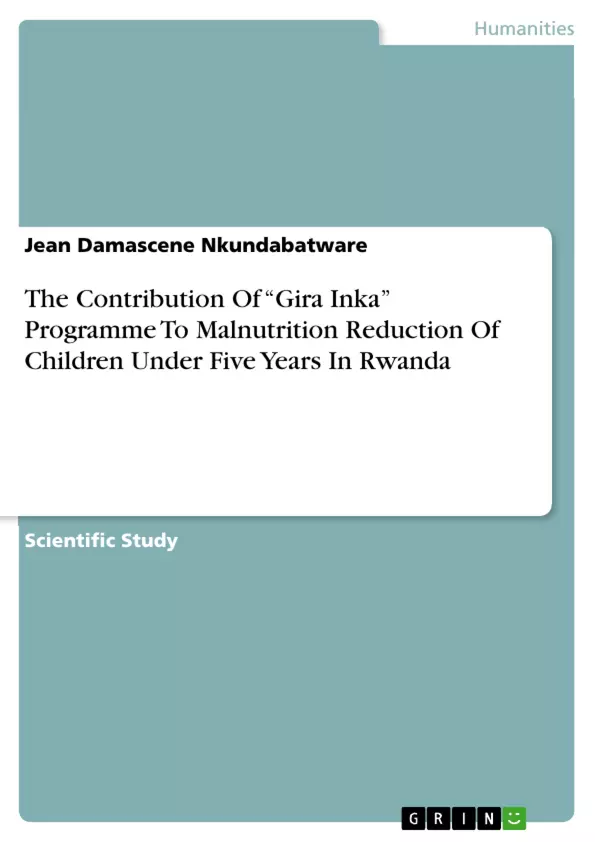This study is about the Gira Inka programme and the fight against malnutrition of children less than five years, particularity in the Fumbwe sector. The study adopted a descriptive design. Scientific methods and techniques were used and facilitated the researcher to find the studys results through the procedures used for the collection, analysis of data and interpretation. The data was collected through questionnaires and analysed with SPSS v21, descriptive statistics, and correlation analysis.
Good nutrition is a good indicator for a country’s sustainable development. It contributes to achieving the country’s objectives, to which Rwanda has committed itself in his Millennium Development Goals. Malnutrition in an individual or at the community level impacts negatively on the well-being of the individual as well as on the community’s development. To help people get out of this precarious situation and its consequences, the Rwandan government has implemented various strategies against malnutrition including the "Gira Inka" programme.
Inhaltsverzeichnis (Table of Contents)
- OBSTRACT
- INTRODUCTION
- BACKGROUND OF THE STUDY
- PROPBLEM STATEMENT
- METHODOLOGY
- FINDINGS
- Family members' nutrition status before and after receiving a cow
- Families' monthly income before and after receiving cow
- Daily meals taken before and after receiving cow
- Constraints of Gira Inka programme
- The strategies to overcome the challenges of Gira Inka programme
- CONCLUSION AND RECOMANDATIONS
- LIST OF FIGURES
- BIBLIOGRAPHY
Zielsetzung und Themenschwerpunkte (Objectives and Key Themes)
This study aims to assess the impact of the Gira Inka program on reducing malnutrition among children under five years old in Fumbwe sector, Rwanda. The study focuses on the period between 2010 and 2015.
- Impact of the Gira Inka program on nutrition status of children under five years old.
- The effect of the program on family income and food security.
- Challenges and strategies to overcome them in the Gira Inka program.
- The role of the program in improving the well-being of families.
- The contribution of Gira Inka to achieving Rwanda's Millennium Development Goals.
Zusammenfassung der Kapitel (Chapter Summaries)
- Introduction: This chapter sets the context by highlighting the importance of good nutrition for sustainable development. It introduces the Gira Inka program as a strategy to combat malnutrition in Rwanda and highlights the persisting challenges of malnutrition.
- Background of the Study: This chapter discusses the global and national contexts of malnutrition, providing statistics and insights into the prevalence and impact of malnutrition in developing countries. The chapter also highlights the significance of the Gira Inka program in the fight against malnutrition.
- Problem Statement: This chapter defines the research problem by outlining the prevalence of malnutrition in Rwanda and its impact on the well-being of individuals and communities. It emphasizes the urgency of finding solutions to address the problem.
- Methodology: This chapter details the research methods used in the study, including the design, data collection techniques, and analysis methods. It provides information about the sampling strategy and data analysis procedures.
- Findings: This chapter presents the results of the study, exploring the impact of the Gira Inka program on various aspects of family life, including nutrition status, income, and food security. It analyzes the challenges and strategies related to the program's implementation.
Schlüsselwörter (Keywords)
The main keywords and focus topics of this study include: malnutrition, child health, Gira Inka program, Rwanda, sustainable development, family income, food security, Millennium Development Goals, and rural development.
- Quote paper
- Mr. Jean Damascene Nkundabatware (Author), 2021, The Contribution Of “Gira Inka” Programme To Malnutrition Reduction Of Children Under Five Years In Rwanda, Munich, GRIN Verlag, https://www.grin.com/document/1148373



